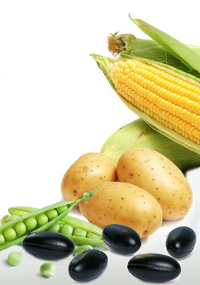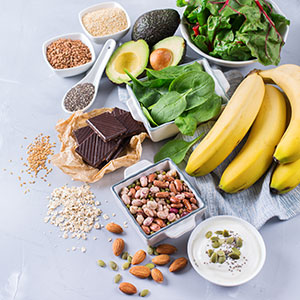Q10 in vegetable capsules
- Q10 for vegetarians and vegans
- The Q10 Phyto capsules, Phytocaps®, are made from fermented corn, potato, and peas (they do not contain cellulose - also called hydroxypropyl methylcellulose or HPMC)
- Phytocaps®, developed by Pharma Nord, represents a whole new generation of natural, soft vegetable capsules
- Q10 Phyto's content is manufactured using the same patented manufacturing process as Bio-Quinone Q10 Gold to ensure high absorption and bioavailability with documentation
- The Q10 raw material used in this product is identical with the Q10 form that the body synthesizes
- Manufactured under pharmaceutical control
| Content | 1 capsule | % of ADT* | 3 capsules | % of ADT* |
|---|---|---|---|---|
| Ubiquinon (coenzyme Q10) | 100 mg | ** | 300 mg | ** |
| dissolved in vegetable oil. | ||||
| Vitamin B2 (riboflavin) | 286 µg | 20% | 858 µg | 61% |
*Recommended Daily Allowance.
** RDA not established.
Product Facts
1-3 capsules per day or as directed by a health professional.
Do not exceed recommended amount
To be taken with food.
Pregnant and lactating woman and persons on medication should seek professional advice prior to taking supplements.
Nutritional supplements should not be used as a substitute for a varied diet and a healthy lifestyle.
Suitable for vegetarians and vegans.
Storage
Room temperature and out of direct sunlight.
Keep out of reach of children.
Ingredients
Soybean oil* (where of a part is hydrogenated.)
Glazing agent: Hydroxypropyl starch
Coenzyme Q10 (ubiquinone.)
Humectant: Vegetable glycerol.
Stabilizers: Agar, Carrageenan, Pectin (apple)
Purified water.
Cocoa powder fat-reduced.
Humectant: Sorbitol
Green tea powder
Red beet powder
Antioxidant: Vitamin E (d-alpha-tocopherol)
Vitamin B2 (riboflavin.)
*Does not contain estrogenic substances.
Patented manufacturing method, EP 3 190 898 B1.
The ingredients in this product do not come from organic farming. The term "Bio" in this context refers solely to the product's bioavailability or biochemical organic nature.
What is Q10 Phyto Bio-Quinone?

Pharma Nord's preparation Q10 Phytohas been developed for the growing number of consumers that choose to cut animal products of our their diet.
Q10 Phyto consists of soft vegetable capsules with Q10 (100 mg) in the form of active ubiquinone dissolved in vegetable oil. The capsule shell has 0.28 mg riboflavin added. The Q10 content in Q10 Phyto is the exact same as in the original Q10 Gold, and a similar effect can be expected.
For decades, Pharma Nord's Q10 has been the world's most widely used brand. This can be attributed to its excellent bioavailability and good documentation.
Phytocaps® cellulose-free vegetable capsules
The capsules in Q10 Phyto are unique. Pharma Nord has developed the phyto-capsules and registered them as a trademark. The capsules are made from local Danish raw materials such as potatoes, peas, and non-GMO corn that have been fermented. In other words, they are made with healthy nutrients that can be digested.
To protect the content of the capsules from light, a mixture of low-fat cocoa powder, beetroot powder, and green tea has been used.
The soft phytocapsules are without the semi-synthetic substance hydroxypropyl-methylcellulose (HPMC), which is produced from acid-treated wood pulp or cotton. HPMC is mostly only used in hard capsules.
Pharma Nord was also offered HPMC when we had to make the vegetable capsule, but we wanted a capsule completely without indigestible ingredients.
Instead, we have spent more than three years developing and testing our own phyto-capsules to avoid using HPMC, a raw material known from the wood and cellulose industry.
The main challenge with this vegetable Q10 preparation has been the development of the capsule itself. The content inside the capsules is already vegetarian and vegan-friendly.
Read more about the development of Phytocaps. Click here!
What is coenzyme Q10?
Coenzyme Q10 (or just Q10) is a vitamin-like substance. It's also called ubiquinone (ubi is Latin and means ”everywhere”). The name indicates that Q10 is found in virtually all body cells. Q10 is a lipid-soluble substance that tends to aggregate in large crystal formations, which the body cannot absorb. With help from a unique manufacturing technique that is developed and patented by Pharma Nord, the Q10 raw material undergoes a special heat and oil treatment that enables the large Q10 crystals to dissolve completely at body temperature. Pharma Nord has managed to develop a Q10 formulation that has documentation for its excellent bioavailability. This is due to the combination of using high-quality Q10 in a special soy oil formulation that enables complete dissolution of the active compound to help it through the intestinal membrane and into the bloodstream. The product is manufactured in compliance with the GMP rules (Good Manufacturing Practice) that is used for pharmaceutical drug manufacturing.
Muscle cells need a lot of Q10
When a cell needs energy it converts fat, carbohydrate, protein, and alcohol into ATP (adenosine triphosphate), a molecule that stores energy in its chemical form. When the cell needs energy it breaks down the ATP molecule and releases the energy that is trapped inside. The entire process takes place inside the cells in some small bean-shaped structures called mitochondria. Coenzyme Q10 is found in all mitochondria and is synthesized by the body. Muscle cells are particularly dependent on large amounts of energy, which is why muscle cells contain substantially more mitochondria than other types of cells. The heart muscle is a good example of body tissue where the cells have higher mitochondrial density and a correspondingly large energy requirement.
A very safe substance
 Studies have shown that even long-term supplementation with Q10 does not affect the body's endogenous Q10 synthesis production of the substance. Pharma Nord has more than 20 years of experience with the use of Q10 as a dietary supplement and as a pharmaceutical drug.
Studies have shown that even long-term supplementation with Q10 does not affect the body's endogenous Q10 synthesis production of the substance. Pharma Nord has more than 20 years of experience with the use of Q10 as a dietary supplement and as a pharmaceutical drug.
Our diet is believed to supply around 3 - 6 mg of Q10 daily, but the accurate amount is unknown. The body stores around 1-1.5 grams of Q10, most of which is found in the heart, liver, and kidneys.
Vegetable sources for Q10
 There are no large quantities of Q10 in vegetable foods. The largest quantities of Q10 are found in organ and muscle meat. The best vegetable sources of Q10 are:
There are no large quantities of Q10 in vegetable foods. The largest quantities of Q10 are found in organ and muscle meat. The best vegetable sources of Q10 are:
- Soybean oil and soybeans
- Spinach
- Broccoli sprouts
- Legumes
- Avocado
- Almonds and peanuts
Questions and answers about Q10 Phyto
| 1 - What is the difference between the various Q10 products marketed by Pharma Nord? |
|
Bio-Quinone Active Q10 GOLD 100 mg: (Dietary supplement) Q10 G - BioQuinone 100 mg: (Dietary supplement) BioActive Q10 Uniqinol 50 /100 mg: (Dietary supplement) |
| 2 - Is there a difference between the Q10 content in Q10 Phyto and Q10 Gold? |
|
|
| 3 - Where does the Q10 come from in Q10 Phyto? |
|
|
| 4 - Why do we use soybean oil and not olive oil or rice oil in Q10 Phyto? |
|
However, you cannot compare our soybean mixture with the regular soybean oil used for cooking. Pharma Nord uses a pharmaceutical grade GMO free soybean oil completely purified of protein substances, which also have been analyzed for absence of proteins in an external laboratory. The protein substances in soybean oil are the same substances that have estrogen-like effects and that people with hypersensitivity to soy typically react to. |
| 5 - Why should Q10 Phyto be taken with a meal? |
|
|
| 6 - Should I take breaks from Q10 Phyto? |
|
|
| 7 - I can't swallow the Q10 capsule, can I cut it? |
|
An experienced heart specialist and Q10 expert actually recommends chewing the capsules for best absorption. The Q10 Phyto capsules are taste neutral. If you suck on the capsule, it will burst after approx. 90 seconds. |
| 8 - How to store Q10-Phyto best? |
|
Refrigerator? |

